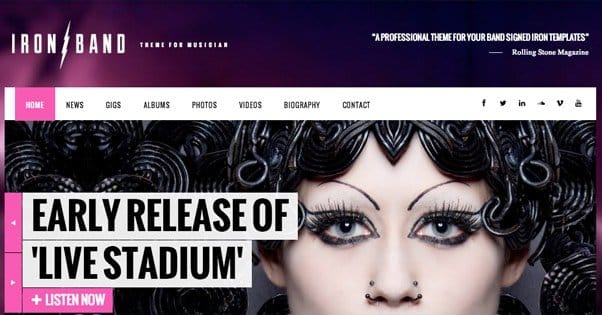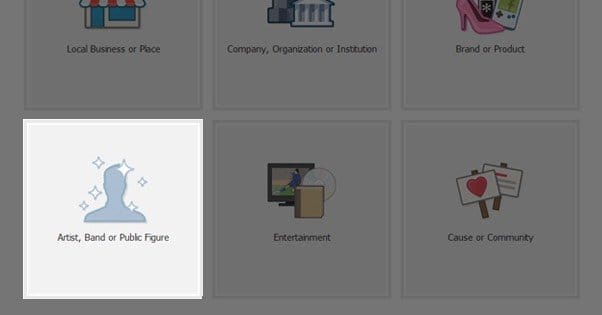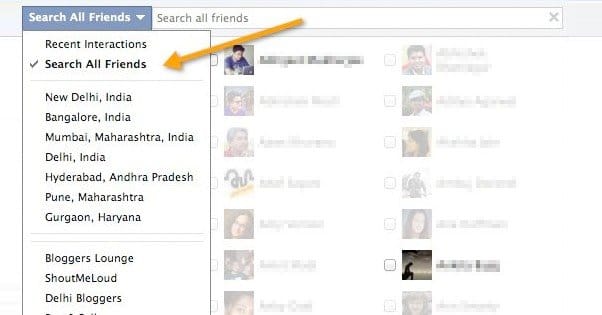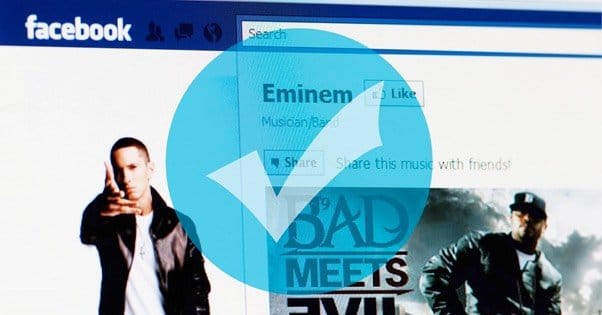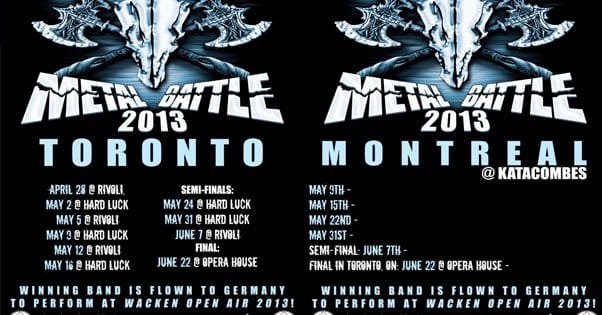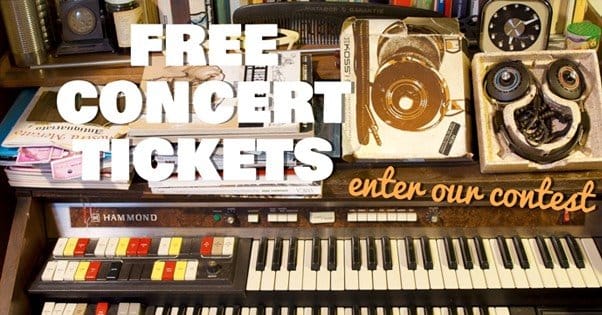 Written by ContentPowered.com
Written by ContentPowered.com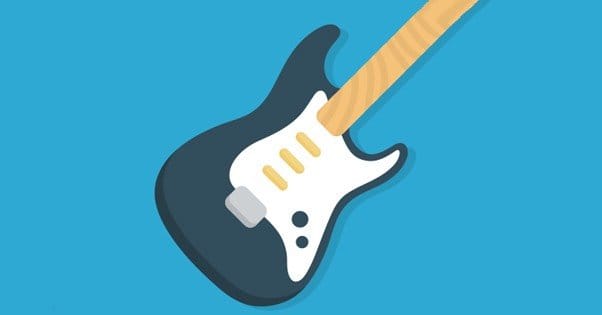
In the past, we’ve written a bit about promoting bands on Facebook. As it turns out, that article was pretty popular, and a lot of our clients are bands. So, I thought what I would do is expand on the advice given in that post, and give you an even better guide to building, growing, and succeeding on Facebook as a band.
To start with, I’ll follow the same basic format as the other post, expanding and elaborating on each point. If you still have questions by the time you’re done, go ahead and leave them in the comments; I’ll do my best to get back to you.
Building a Website
The first thing you need to do to build a successful band Facebook page is build an off-Facebook website.
It doesn’t need to be a particularly complex website, but I recommend having a blog that you keep relatively active. Conventional marketing for a business says you should post anywhere from once a week to once a day. For a band, since the focus is on your music, I would recommend 1-2 posts per week. Enough to keep your website active, enough to give your fans something to come see, but not so much that you’re struggling to come up with content or find time to blog in between jam sessions, events, and studio recording sessions.
That said, your website doesn’t have to be incredibly basic; you can make it look stylish and pack it with content. The best part is that 90% of the site – the exception being the blog – can remain static. You only need to update it when you release new music, have new tour dates to announce, or have big changes to make. Only the blog needs frequent updates, and that’s easy.
See, the point of the blog is to give you something to share on Facebook and any other social networks you want to use, like Twitter. Anything you think you should post on Facebook – especially if it’s longer than a sentence or two – can be expanded a little into a blog post and posted on your site.
Unlike many businesses, you don’t really need to worry about thin content in your blog posts. SEO isn’t a huge concern; a lot of your growth as a band comes from word of mouth, from fans, and so forth. Organic search results aren’t usually a huge concern. Therefore, your blog posts don’t need to be huge; they just need to exist. That said, if you can make longer blog posts and support them with content, by all means feel free.
So, what can you have on a website? Consider a basic layout; navigation on top, tabs with each of these that load content on the bottom. Any web designer can make such a simple site, though if you want a particularly stylish, sleek or dynamic site, you might want to get someone more in tune with band web design.
- Your blog, of course. You can make this your “homepage” or you can make it a side tab. The main thing is you need the content.
- A band profile. Who you are, where you were formed, what inspires you, the typical Wikipedia entry sort of content. You can also include individual member pages with their own bio information, side projects, talents, contact info, and anything else you want to include.
- A tour feed. If you have a fairly fixed tour each year, post it as early in advance as you can and keep it up for the duration of the year. If you have a more dynamic, on the fly tour, update it as quickly as you can so users have the most time to see they can get.
- A discography. A list of albums, with a list of tracks, is all you really need. It helps fans figure out what music you have available, and what they may have missed.
- Lyrics, if you’re a band with vocals, go a long way towards settling disputes amongst your fans and answering a lot of fan mail preemptively. You’d be surprised how much of your mail will be requests for lyric clarification. Or maybe you wouldn’t; you’re the band, after all.
- A photo album. This is take it or leave it, up to you. I actually think the best choice is to post your photos directly to Facebook, and to Instagram if you’re willing to use it. Whether you duplicate them on your website or not is up to you.
- A live listen section. Whatever you do, don’t make your music autoplay for everyone who visits. No one likes autoplay music. Make a dedicated section with songs available to listen, or just link to a Soundcloud account.
- Store links. If you want people to buy your music, you should give them a place to do so. Link to your albums on iTunes or Amazon, or whatever third party press you use. You can roll this in with your discography page if you want.
Anything else you want to include, feel free to do so. Go ahead and check the link I posted a bullet point above, though; it’s a good article from DesignShack that highlights the dos and don’ts of band page design.
Building a Band Facebook Page
Some of you out there have heard all of that before, and already have a website. Some of you just have a website with basic info, and have taken my advice to heart to improve it. Either way, now that you have that set up, you can work on your Facebook page.
When you go to register a Facebook page, you will need to do so from a personal profile. Never attempt to run a band central hub from a profile; you lose out all the benefits of a page while being unable to utilize most of the features of a profile to the fullest. If you want to promote yourself on a personal profile, feel free; just make sure you’re using it as a personal profile, and keep the page as its own entity.
When you register a page you will have to pick a category. Picking the right category gives you access to various additional features. You can see a list of the categories here. The one you’re going for, obviously enough, is “Artist, Band or Public Figure”. This gives you a few benefits. Take a look at any random band page, like this one. At the top, see the “shop now” button? That’s a Call to Action. More on that momentarily.
If you scroll down the left side of the page, you see in the About section several special fields. Members, Genre, and Hometown are all unique to bands. Further down, you see “Upcoming Events” with a “subscribe” link below it. This is an app provided to Facebook band pages, which allows you to post calendar dates for shows and community events. The subscribe button allows fans to get a notification whenever a new event is posted or an upcoming event is about to happen.
Here’s a list of the things you should customize, add, or otherwise pay attention to on your page when you set it up. Oh, and keep in mind; before you want your page to go public, you can keep it unpublished. It will be invisible until you’ve filled out all of the information, so you can debut strong.
- Your page name should be your band name. This will also apply to your custom vanity URL; as long as it isn’t taken by something else. Sorry, generic named bands. You’ll have to add _Band to the end, or something.
- The Call to Action can be any of the options Facebook provides. The options are Book Now, Contact Us, Use App, Play Game, Shop Now, Sign Up, or Watch Video. For a band, I might recommend posting a demo video and using the Watch Video CTA. You could also use Book Now if you want random people to hire your band. Otherwise, a basic Sign Up or Contact Us linking to your contact information works as well.
- Photos are important. Your cover photo needs to exist, it’s basically a billboard. You can showcase album art, use a stage photo of a show, or pose with your band for a promo shot. Meanwhile, your profile picture can be a logo, album art, or something else that represents your band. You can fill out the photos section with any images from shows and whatnot you like. I’ll give you more ideas about that in a future section.
- Your About section should have your member list, your genre, your hometown, and your website listed. You also get more information for the About section itself, including founded date, record label, description, bio, band interests, and so forth. Fill out everything you can.
- Milestones give you a timeline on the right side of your page. Even if all you have is a founded date, it’s better than nothing. You can also add record release dates, prominent tour dates, and so forth.
There’s also tab apps, which are easy to create and can give you additional functionality. If you go to a band page like Lindsey Stirling’s, you’ll see “Buy Tickets” “Merchandise” and under the “More” section entries like “Fanspace” and “Sheet Music.” These are all custom apps added to Facebook, they aren’t default functions.
Tab apps are really easy to make; you just have to use a third party service like TabFusion to do it. You can use one for tour dates, one for sheet music, one for a merch store, anything you like really. One idea I see occasionally, but like, is a sort of jukebox on Facebook. Make a tab app, embed a playlist from Bandcamp or Soundcloud, and let users listen at their leisure.
When everything is set up, when all the information is filled out, you’re ready to publish your page. Remember; once you’re published, you’re rolling. It’s the starter gun for the race, and you can’t afford to falter and start slowly. You need to hit the ground running.
That means two things. First, try to post something on Facebook every day. It can be a photo of behind the scenes practices. It can be a text post asking a question. It can be a new music video. It can be a link to a new blog post. It can be anything you want it to be, you just need to post every day, minimum. If you come up with more to say, feel free to say it; if you don’t, try to schedule posts out so that you have something going.
The way Facebook works is that your posts are seen more when you have more people liking, commenting, and sharing them. They’re also seen more the more often this happens. So it’s in your best interests to post frequently and get users to engage with those posts.
First, though, you need fans.
Inviting Existing Fans
Unless you’re starting all of this up as a brand new band with no following, you should have some fans. It doesn’t matter how small your following is; you just need to get them on to Facebook. With the resources you have at hand, there are three options.
First, you can use a mailing list. If you’ve been running a website for a while, one thing you might be doing is running a newsletter. It doesn’t need to be a huge or frequent newsletter; a monthly digest or a weekly promotional message with venues and shows is all you need.
Facebook allows you to import a mailing list. It takes the list of email addresses and cross-references them with user accounts on Facebook. When it finds a match, it will send that user an invitation to follow your page.
Another option is through your blog. Post a blog entry about registering for Facebook, and starting to build your community. As a bonus, you can link to that post on other social networks, including Myspace or Twitter.
A third option, and one of your most likely options, is to add your Facebook link to various promotional material. Have flyers to hand out? Include your link. Have business cards? Link. Add the link to your album insert. Add it to any marketing or promotional material you have.
You can also go around and add links to Facebook on any other online presence you have. Bandcamp, Soundcloud, Twitter, music forums; anything you like. If you have and use an account, add your Facebook link to it.
Obtaining Facebook Verification
Here’s a secret, and it’s one huge advantage you have as a band Facebook page over businesses and a lot of other pages. You, my friend, can get official verification.
Verification on Facebook is a big deal for businesses, so much so that I’ve seen people bend over backwards for the chance at seeing that coveted blue checkmark. As a band, though, you can get it easily. I’ve seen solo artists with pages under 1,000 fans still get the verification, while companies with millions of followers don’t.
To request verification, all you need to do is go to this link here and fill out the form. All you have to do is provide suitable documentation showing you are who you say you are, or at least the person running your page is officially sanctioned to represent you. If you’re not sure about what you can submit, you can send Facebook a message directly. Their support is there to help, after all.
What does verification do for you? Well, not much. If you’re a band with a common name and users might not find you through Facebook’s search, verification makes your page stand out. If imposters crop up, verification puts a stop to their shenanigans. Other than that, there’s no real tangible benefit. Still, it’s worth getting to rub it in the noses of the businesses that try so hard and can’t get it.
Connecting with Bands and Labels
And more fans? Connect with people. There’s a box on your Facebook page that shows other pages you’ve liked. Go ahead and like pages for other bands you like, record labels you like, and so forth. This gives them a bit of promotion. Ideally, you can get those other entities to like your page in return.
There’s more to networking than just the like, though. You can, for example, share a post about a band that’s playing a show with you. You can share posts from your record label, and they can share announcements from you. It’s all part of being one large musical community.
Plus, those connections give you an in when more serious discussions come up. They prove an association that otherwise might not have blossomed. That’s part of why I recommend following record labels you’re interested in joining. It might not be a conscious factor, but it can put you on their radar.
Giving Fans the Backstage Pass
If a Facebook user wants to know more about a band, they can check Wikipedia, or their favorite band directory. If they want to listen to that band’s music, they can go to YouTube, or Bandcamp, or Soundcloud, or iTunes. If they want to see tour dates, they can check Ticketmaster, or check with local venues, or browse your website.
What do they want to see your Facebook page for?
This is a question you have to ask yourself. More importantly, it’s a question you need to answer in a way that attracts fans. I have two ideas, though I’m sure you can come up with more.
Idea 1: the backstage treatment. Facebook is a more casual setting than your website, than interviews, than magazine stories, than concerns. It’s where fans can see you out of your element. It’s where they can see the things that drive you, where they can see what activism you’re part of, what hobbies you have. It’s where they can feel a more personal connection with your band.
Encourage that. Post pictures of your daily life, of your behind the scenes antics, of the setup for your tours. Post fun pictures hanging out with the members of other bands. Give fans something to latch onto, and reel them in.
Idea 2: coupons. You can run giveaways, contests, and coupons from your Facebook page. Just search up “contest apps” and you’ll find a ton of free ways to do it. You know what users love? Free stuff. You know what they love more? Free stuff branded with the imagery of their favorite band. T-shirts, tickets, whatever. Give them a reason to engage to get entries into your contests.
The one thing you need to watch out for are the Facebook regulations for contests. Here’s a good post you can read to run one successfully. It’s a little ad- and business-focused, but most of it still applies to band promotions.
Soliciting Feedback and Engaging Followers
As I mentioned before, Facebook works based on engagement. To be a little more precise, Facebook’s algorithm is constantly calculating a ranking between you and each individual follower. You might have a high EdgeRank with one person who loves your music and comments on every post, and you might have a low EdgeRank with someone who liked you for a contest but doesn’t really care.
EdgeRank specifically is a calculation that considers the type of post you made, the time it has been since you made it, and the frequency of engagement from the user. Images and videos are higher weight and thus more visible than links, which is in turn more visible than text posts. Time, of course, is more valuable the more recently the post was posted.
As for engagement, any page like, post like, post share, comment or reply is a form of engagement. In fact, even visiting your page and doing nothing else is a minor form of engagement.
The higher a user’s EdgeRank with you, the more likely they see your posts. The more they see your posts, the more they can engage, the more they can promote your band, and the more benefit they bring to you.
That’s why you want to engage followers as much as possible. It’s why image posts are good. It’s why I recommend contests with engagement as an entry method. It’s why you should post every day. All of these make you more visible. Too many bands fall into the trap of posting whenever they feel like it, which diminishes their connection to their fans, and makes their posts less visible.
Questions are the key to good engagement. Ask your fans questions and start conversations. As people respond, keep chatting. I know it seems like you’re wasting time on Facebook all day, which just means you need to ration your time. That, or hire someone to manage your page for you.
Creating an Official Band Promoter Group
Here’s an idea; why not mobilize a street team? This is something I’ve seen bands do before. They create a Facebook group and provide the members of that group high-resolution promotional materials to print out and circulate.
This does two things for you. First, it gives you a central location for your most engaged and most important advocates. These are the people who will literally go out of their way just to promote your band. With Facebook and the Internet, these people aren’t even necessarily in your hometown or state. They can be anywhere.
Second, this does a lot of free advertising. Every flyer these people hand out, every ticket they sell, is promotion you didn’t have to pay for or work for yourself. Plus, these people are fans; they’re doing it out of love, not out of desire for compensation. All you need to do is recognize them and support them and they’ll be advocates forever.
Creating a Facebook group takes seconds. It’s much easier and faster than creating a page, and you don’t need to put anywhere near the same amount of effort into running it.
Creating Tour Events or Promoting Existing Events
Another type of page you can create is an event page. However, you won’t necessarily want to create a lot of these. See, generally when you’re playing a show, the venue will have a Facebook page and will create an event page for the show. Instead of creating a new event to compete with theirs and muddle the RSVP numbers, just promote their event. It doesn’t take much to promote; just share it, and maybe add a link to your tour page.
If you’re playing a house party, or some other venue with no Facebook page, or the venue doesn’t want to manage an event page, you can handle it. Event pages are midway between groups and pages in terms of complexity to create. They’re quick to set up, at least, and give you some idea of how many of your fans are able to attend.
So, what do you think? Are you going to be more successful running a band page on Facebook, or are you still left with nagging questions?
